
How to teach Responsible Suicide Reporting (RSR)
Here you will find details on how you can introduce the topic of ethical suicide coverage to your students. It’s really important that they know how to report responsibly so they can avoid potentially contributing to further copycat suicides or potentially harming vulnerable people, i.e. those who have been bereaved, or those who are vulnerable to suicide themselves. Reporting suicide responsibly can also have positive effects on vulnerable people and can help the public understand more about this sensitive subject.
The following sections offer advice on how you can help your students learn about Responsible Suicide Reporting.
Advice to tutors
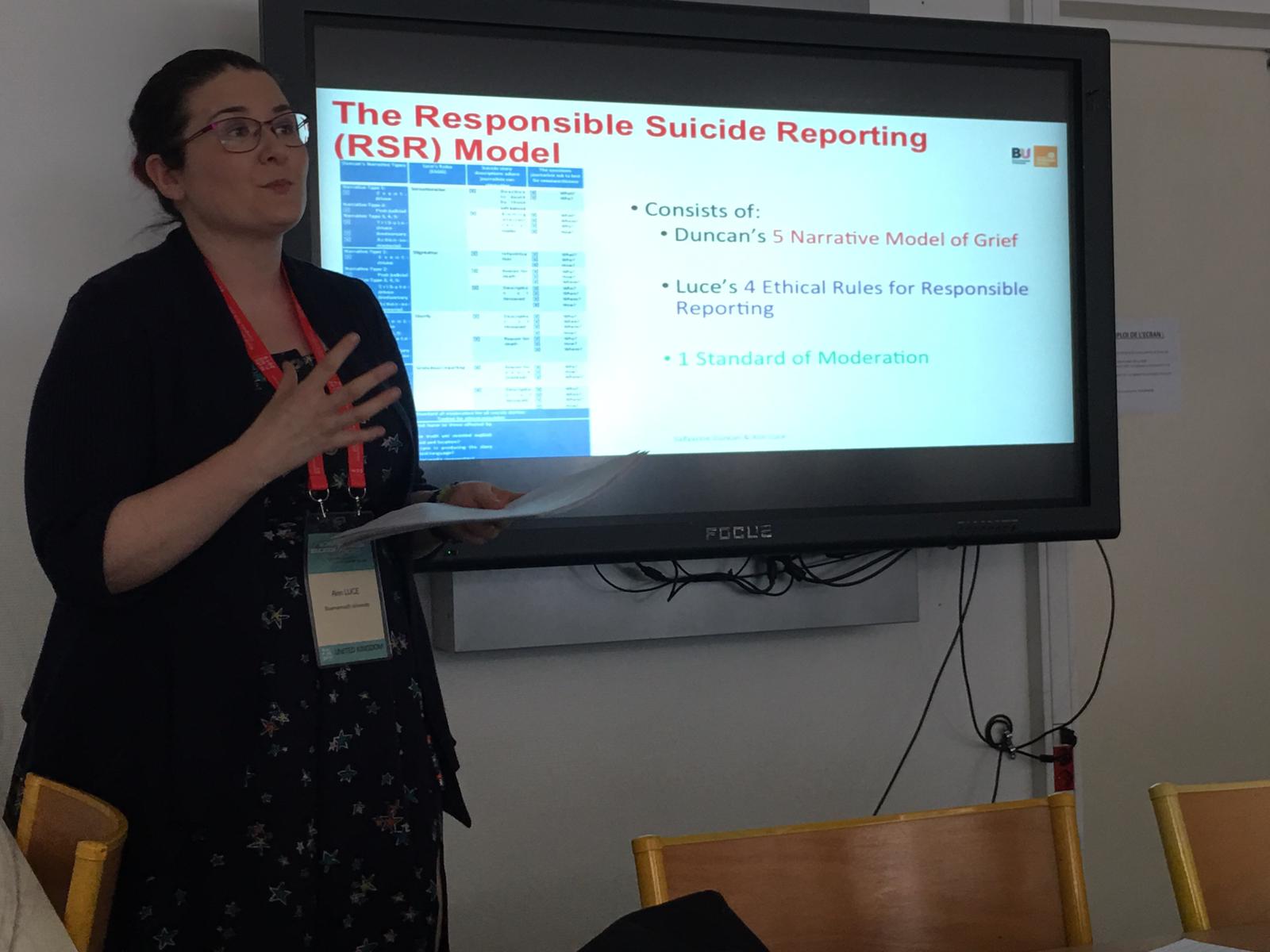
We recognise that teaching responsible suicide reporting can be daunting, especially if you have little or no experience of teaching sensitive issues or journalism ethics. We want to make this process as accessible as possible for you so that you feel better prepared to take it on. Our lesson plans aim to build your expertise and empower you to guide your students towards reporting engaging, informative and responsible stories that address the key risk factors highlighted in media reporting guidelines like those produced by the WHO, NUJ and Samaritans.
You may be able to draw on your previous professional experience of reporting suicide to recall some of the concerns you might have had. That can be very useful if these were positive encounters but we would caution against sharing your adverse experiences with students.
Creating a safe space
It is important that you frame any sessions talking about suicide in a responsible and ethical manner. You should be aware that in a survey by Luce and Duncan (2018) asking journalism students about their perceptions on suicide, 60% of respondents said they knew someone who had died by suicide and 20% said they had lost someone close to them.
Approach
The aim is to provide students with an absorbing way of learning about suicide reporting that is based on what you already do with them – storytelling.
That means you can build in teaching and learning about suicide reporting into practical journalism modules like news, features, magazine journalism, mobile journalism, data journalism, podcasting, video journalism, broadcast journalism, sports journalism and other specialisms; news days, and breaking news scenarios. You could also use parts of our lessons in theoretical classes, e.g. journalism ethics, news theory, public affairs, and law.
You can choose to use these lesson plans individually, in part, or combine several together for a 1-2 hour session.
In these lessons our approach with students is:
• you lead, we guide
• interactive and collaborative
• learn as you go, find out and feed back
Structure

The lesson plans are a series of mini-lessons – bite-sized chunks so you have control over how you integrate the topic of suicide into your teaching.
They are designed as stand-alone lessons to give you flexibility to fit them into existing classes, modules or courses. You can use as many or as few as you can accommodate. Three mini-lessons are fundamental – What is Responsible Suicide Reporting (RSR)?; How do we report a responsible suicide story?; and How do you write a responsible suicide story? – and we would recommend that you use these in your classes first and foremost.
The lessons
And finally … Taking care of yourself
You can find all your self-care needs here
Reporting suicide can be emotionally exhausting and can resonate with journalists who cover these stories. Therefore, talk to your students about the need for them to be aware of their own mental health and care for themselves as they would a physical illness.
These links may be helpful:

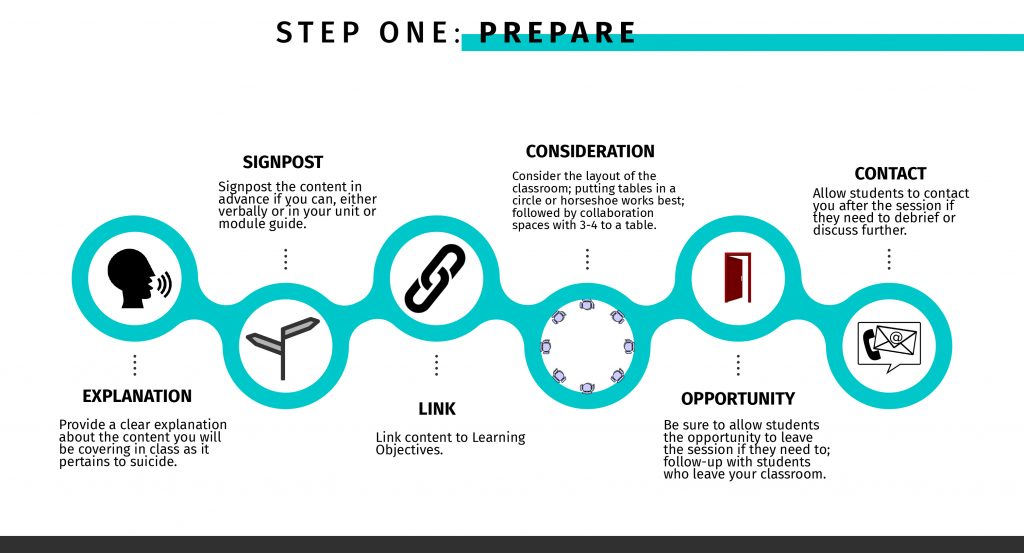
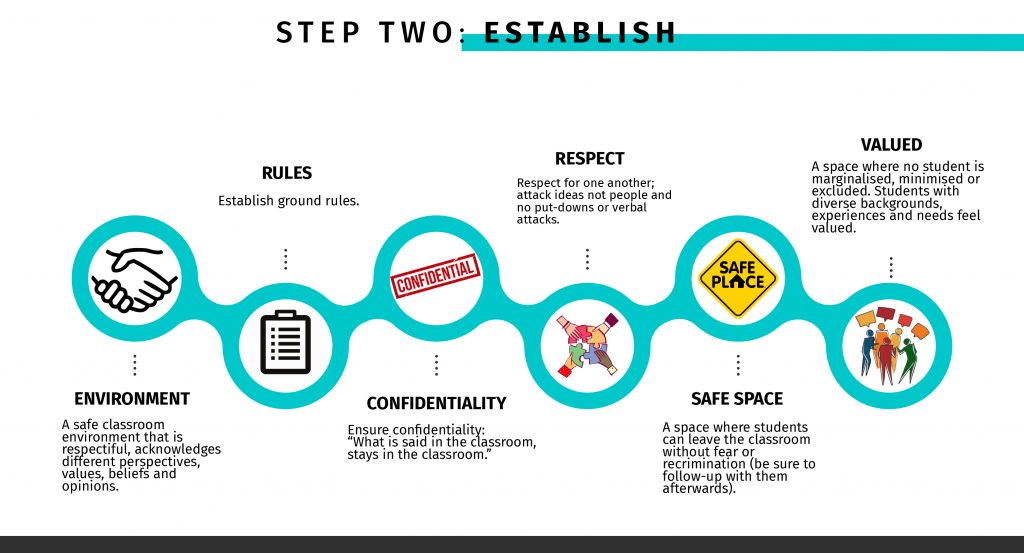
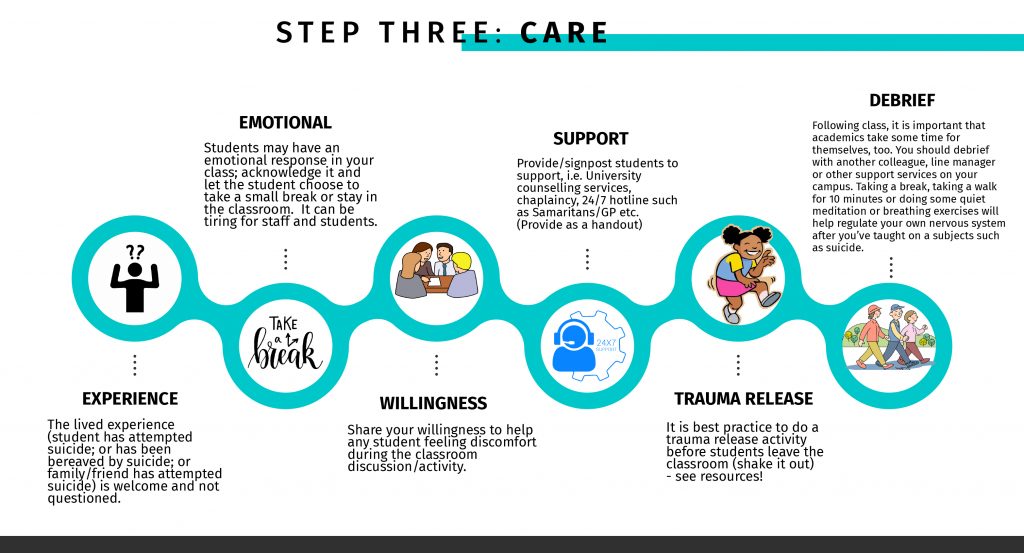
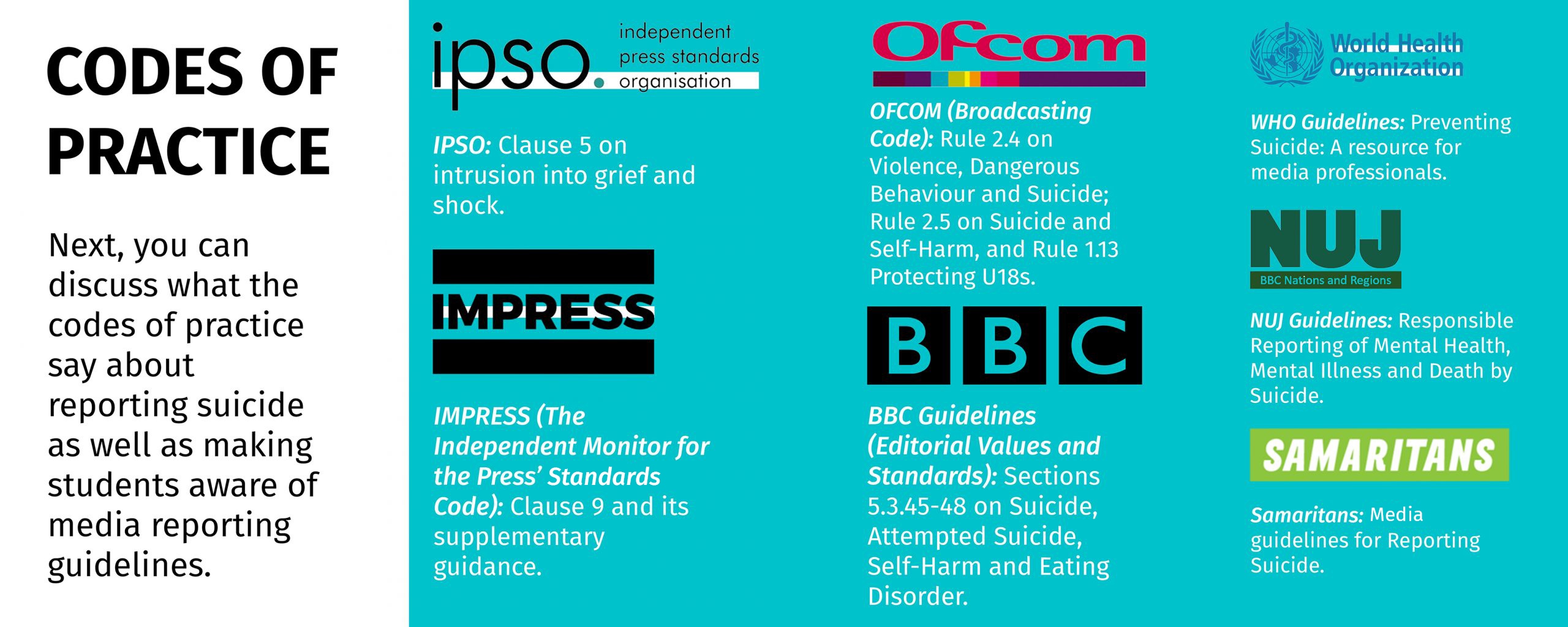
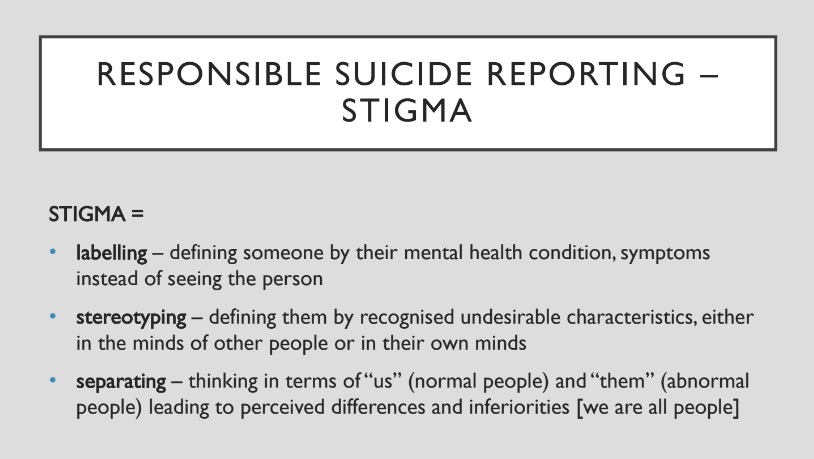
 Reporting on suicide is not just about what happens in the story; it’s all the elements of news production that go into creating that story. Here we provide some discussion prompts on how to make sure suicide reporting is responsible and ethical beyond the storytelling. Familiarize yourself with the information provided on the journalists toolkit on this website. Each of these discussion prompts comes from best practice provided there.
Reporting on suicide is not just about what happens in the story; it’s all the elements of news production that go into creating that story. Here we provide some discussion prompts on how to make sure suicide reporting is responsible and ethical beyond the storytelling. Familiarize yourself with the information provided on the journalists toolkit on this website. Each of these discussion prompts comes from best practice provided there.